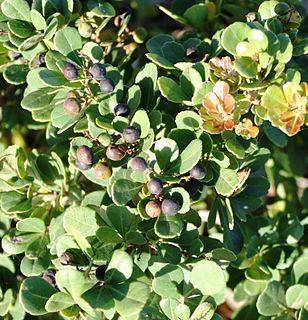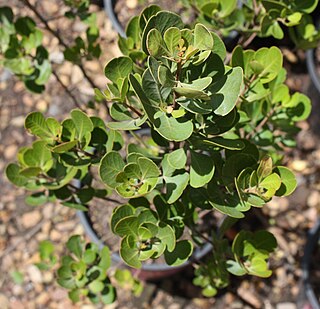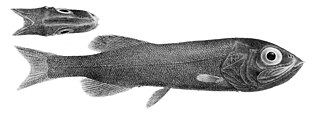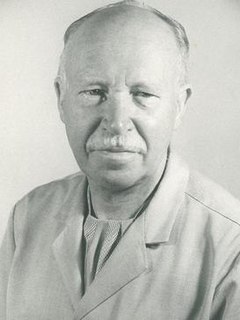
Moffett Federal Airfield, also known as Moffett Field, is a joint civil-military airport located in an unincorporated part of Santa Clara County, California, United States, between northern Mountain View and northern Sunnyvale. On November 10, 2014, NASA announced that it would be leasing 1,000 acres (400 ha) of the airfield property to Google for 60 years.

Searsia pendulina, commonly known as the white karee (English) or witkaree (Afrikaans), is a hardy, very fast growing, semi-deciduous tree. It occurs naturally along the Orange River and some of its tributaries.

Searsia pyroides, previously known as Rhus pyroides, is a species of Searsia, native to southern Africa. This tree occurs throughout the whole of South Africa, a part of Botswana, Zimbabwe and Tanzania and in some areas of Namibia near Windhoek.

Searsia lucida, previously known as Rhus lucida, and commonly known as the varnished kuni-rhus (English) or blinktaaibos (Afrikaans).

Searsia dentata, the nana-berry (English), or nanabessie (Afrikaans), is a medium sized, deciduous tree, reaching a height of about 5 metres and a spread of 4 metres, and with a tendency to scramble through and over neighbouring trees. It occurs naturally in almost the whole of South Africa except the Western and Northern Cape Provinces. Its habitat varies from sea level to the highlands of the Drakensberg. It is frost-hardy and should be planted in full sun. The strongly aromatic leaves are usually conspicuously toothed, though sometimes they may be only slightly toothed. The tree produces small, creamy-white flowers in masses, developing into small, flattened drupes (5-6mm) which turn red or orange when ripe and brown when dry. The ripe fruits are eaten by birds, while the foliage is food for the larvae of the pepper tree moth Bombycomorpha bifascia.

Searsia leptodictya is known as mountain karee in English, bergkaree in Afrikaans, and mohlwehlwe in Sotho. An evergreen tree reaching a height of 5 metres and a similar spread, it is drought resistant but only semi frost hardy. It is an attractive small tree with a rounded crown and a pleasing weeping effect. It can be planted in full sun or in partial shade. The tree bears small white flowers, which on female trees turn into bunches of small berry type fruit, which attract birds who feed on the berries. The tree is an attractive tree for a small garden. The berries can be brewed into a beer.

Searsia lancea commonly known as karee, karree (Afrikaans), is an evergreen, frost hardy, drought resistant tree, which can reach up to 8 metres in height with a 5 metre spread. In North America, where it is naturalized, it is known as African sumac and willow rhus. It is one of the most common trees on the Highveld and in the Bushveld in South Africa, but not found in the Lowveld.

Searsia crenata, previously known as Rhus crenata,, is a species of Searsia that is native to South Africa, where it grows in frost-free and light frost areas, especially on beach sand dunes.
Searsia pentheri, the common crowberry (English), gewone kraaibessie (Afrikaans), iNhlokoshiyane (Zulu), or mutasiri (Venda), is a species of tree in the genus Searsia. Frost hardy tree reaching a height of up to 6 metres. The tree is mainly evergreen but loses its leaves in severe winters. It has olive-green foliage with dark brown bark and can be grown in either full sun or semi shade. Small flowers are produced and are followed by masses of shiny, light brown, small edible fruits, which provide a feast for birds. Only female trees produce these fruits though. The tree occurs over large portions of South Africa. It has been planted in Spain.

Moffett Park is a light rail station operated by Santa Clara Valley Transportation Authority (VTA), located in Sunnyvale, California. Moffett Park was built as an infill station. This station is served by the Orange Line of the VTA Light Rail system. Technology Corners at Moffett Park, an office building occupied by Google, is located adjacent to Moffett Park station.

The 2011 Kentucky gubernatorial election was held on November 8, 2011, to elect the governor of Kentucky and the lieutenant governor of Kentucky. Incumbent Democrat Steve Beshear won re-election, defeating Republican challenger David L. Williams, then the president of the state senate, and Gatewood Galbraith, an independent candidate. Statewide turnout in this election was 28%.

Searsia glauca is a small, compact tree or bush that is commonly found along the coastline of southern Africa. Although commonest near the coast, it is also found inland among fynbos vegetation.
Searsia laevigata, the dune currant rhus, is a small, bushy, evergreen tree that occurs in rocky fynbos slopes and coastal shrub in South Africa.

Searsia koefoedi, Koefoed's searsid, is a species of tubeshoulder found in the oceans at depths of from 450 to 1,500 metres.

Searsia batophylla, the bramble currant, is a localized shrub that is endemic to the vicinities of Steelpoort and Burgersfort in Sekhukhuneland, Limpopo, South Africa. It is an evergreen, drought resistant plant that grows in the rain shadow of the Limpopo Drakensberg. Its natural range has been impacted by mining, human settlements and overgrazing. Though locally common in 26 sub-populations, it is estimated that they have been reduced to some 30% of their former population and range due to these human activities.

Searsia is a genus of flowering plants in the family Anacardiaceae.
Polygala sekhukhuniensis is a species of flowering plant in the milkwort family (Polygalaceae). It is endemic to South Africa.

Hiram Wild was an English botanist who worked in Southern Rhodesia. The standard author abbreviation Wild is used to indicate this person as the author when citing a botanical name.














